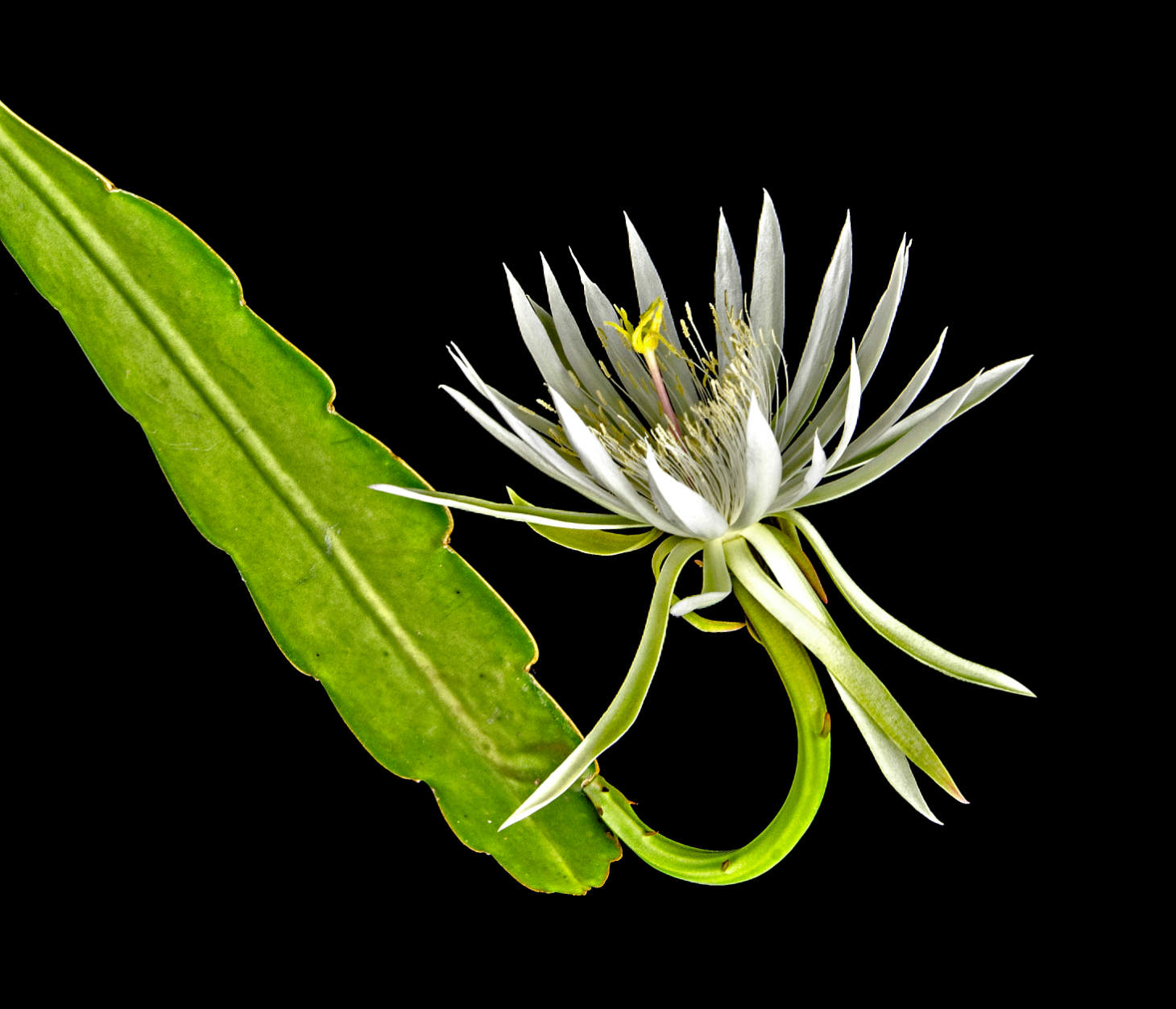Orchid Cactus Care
Orchid cacti, also known as Epiphyllums, are epiphytic cacti admired for their stunning, often nocturnal, flowers that resemble orchids. These unique epiphytic plants naturally grow attached to trees in tropical forests. Despite their exotic appearance, they’re surprisingly adaptable to home environments with the right care approach. Orchid cacti need regular watering during their growing season, but allow the soil to dry slightly between waterings to prevent root rot.
Unlike desert cacti, these tropical beauties prefer bright, indirect light rather than harsh direct sun. You’ll find they thrive in environments that mimic their natural habitat—humid with filtered light. Many orchid cactus owners place them in bright bathrooms or near east-facing windows where they receive morning sunlight but are protected from the intense afternoon rays.

Key Takeaways
- Water orchid cacti when the soil surface feels dry, maintaining moisture without saturating the roots.
- Place your epiphyllum in bright, indirect light and protect it from hot, direct sunlight to prevent leaf damage.
- Use well-draining potting mix and provide humidity to mimic the tropical forest conditions these epiphytic plants naturally prefer.
Getting Started with Orchid Cactus (Epiphyllum) Care
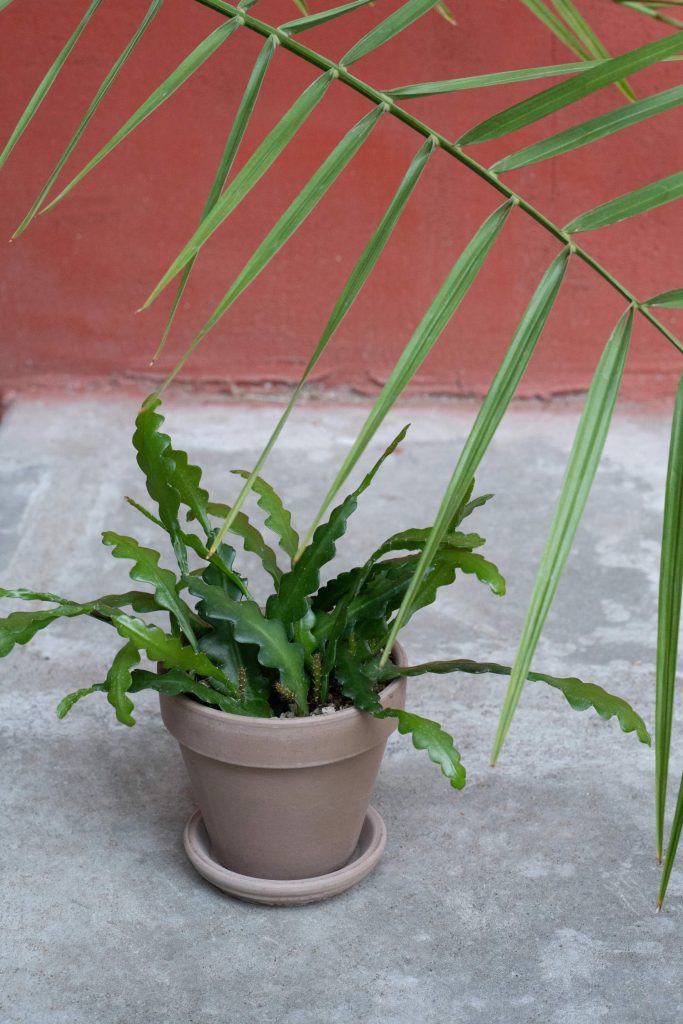
Orchid cacti are unique plants that combine the exotic blooms of orchids with the resilience of cacti. They require specific conditions to thrive and produce their stunning flowers.
Selecting the Right Pot and Soil
Choose a pot that allows good drainage with several holes at the bottom. Orchid cacti prefer to be slightly root-bound, so select a container just 1-2 inches larger than the root ball.
For potting soil, create a well-drained mix that mimics their natural epiphytic habitat. Combine:
- 1 part potting mix
- 1 part perlite
This mixture provides the perfect balance of moisture retention and drainage that Epiphyllum needs. Hanging baskets work wonderfully for varieties like Epiphyllum anguliger (fishbone cactus) as they allow the flat, leaf-like stems to cascade naturally.
When potting, position the plant so that aerial roots have room to develop. Avoid burying stems too deeply, as this can cause rot.
Optimal Environmental Conditions
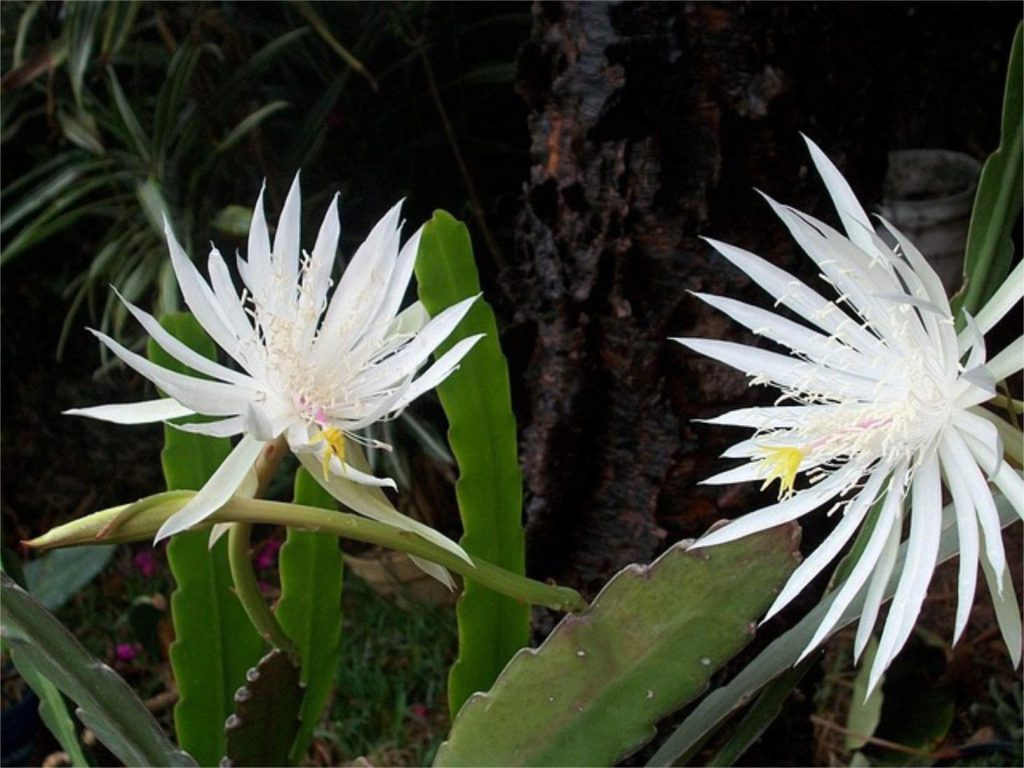
Orchid cacti thrive in conditions similar to their native tropical forest understory. Place your Epiphyllum in partial sun or bright indirect light. Direct afternoon sun will burn the stems.
Orchid cacti thrive in temperatures between 60-80°F (16-27°C) and should be protected from temperatures below 50°F (10°C). Most varieties, including Epiphyllum oxypetalum (Queen of the Night), can’t tolerate frost and are suitable for hardiness zones 10a to 11b outdoors.
High humidity benefits these plants significantly. Mist regularly or use a humidity tray in dry environments. During active growth in spring and summer, maintain slightly moist soil.
In winter, reduce watering but don’t let the soil dry completely. Orchid cacti enter a rest period where they need cooler temperatures (around 50-60°F) to trigger spring flowering.
Maintaining Health and Vitality
Keeping your orchid cactus thriving requires consistent care with proper watering, fertilizing, and pest management. These beautiful plants will reward your efforts with stunning blooms when their basic health needs are met.
Watering and Fertilizing
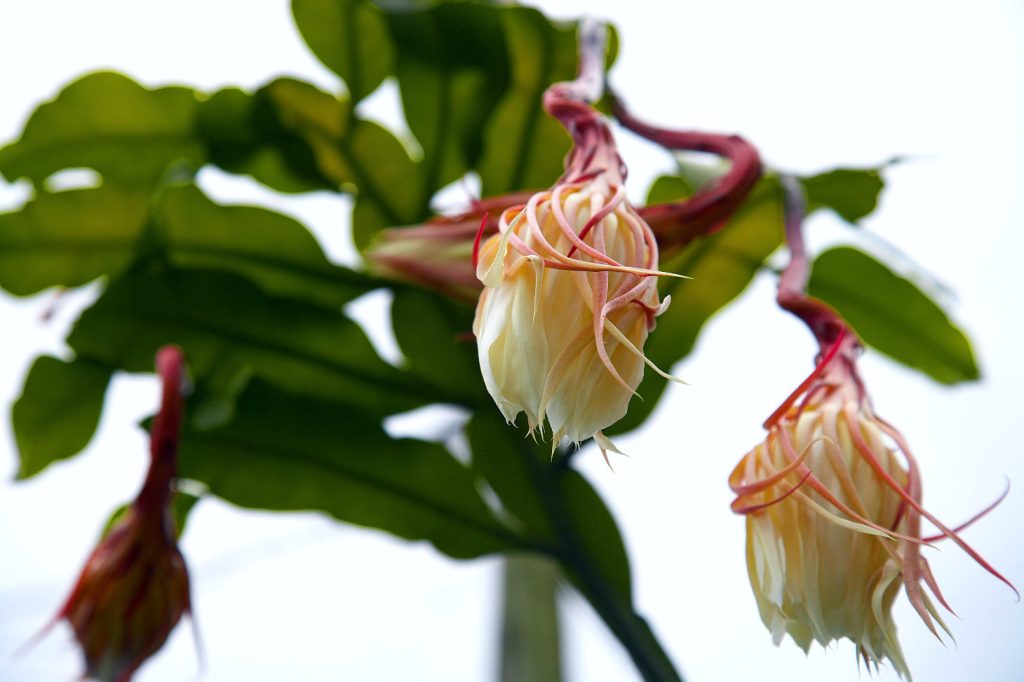
Proper watering is crucial for orchid cactus health. During the growing season (spring and summer), water thoroughly when the top inch of soil feels dry. This usually means watering every 7-12 days, depending on your home’s conditions. In winter, reduce watering frequency to help trigger blooming.
Orchid cacti are not heavy feeders, but they benefit from regular fertilization. Apply a balanced, water-soluble fertilizer once a month during the active growing season for healthy growth and flower production.
Always water before fertilizing to prevent root burn. Stop fertilizing completely during winter dormancy (November to February) when the plant needs to rest.
Preventing and Treating Pests
Orchid cacti are relatively easy to grow but can occasionally attract pests. The most common invaders are mealybugs and scale insects, which appear as white cottony spots or small brown bumps on stems.
Inspect your houseplants regularly by checking both sides of stems. Early detection makes treatment much easier. For light infestations, dab the pests with a cotton swab dipped in 70% isopropyl alcohol.
For more serious problems:
- Spray with insecticidal soap or neem oil solution
- Apply every 7-10 days for at least three treatments
- Isolate affected plants to prevent spreading to other houseplants
Prevention is ideal—maintain good air circulation and avoid overwatering, which creates favorable conditions for pests. These simple practices help keep your orchid cactus healthy and vigorous.
Propagation and Pruning Techniques
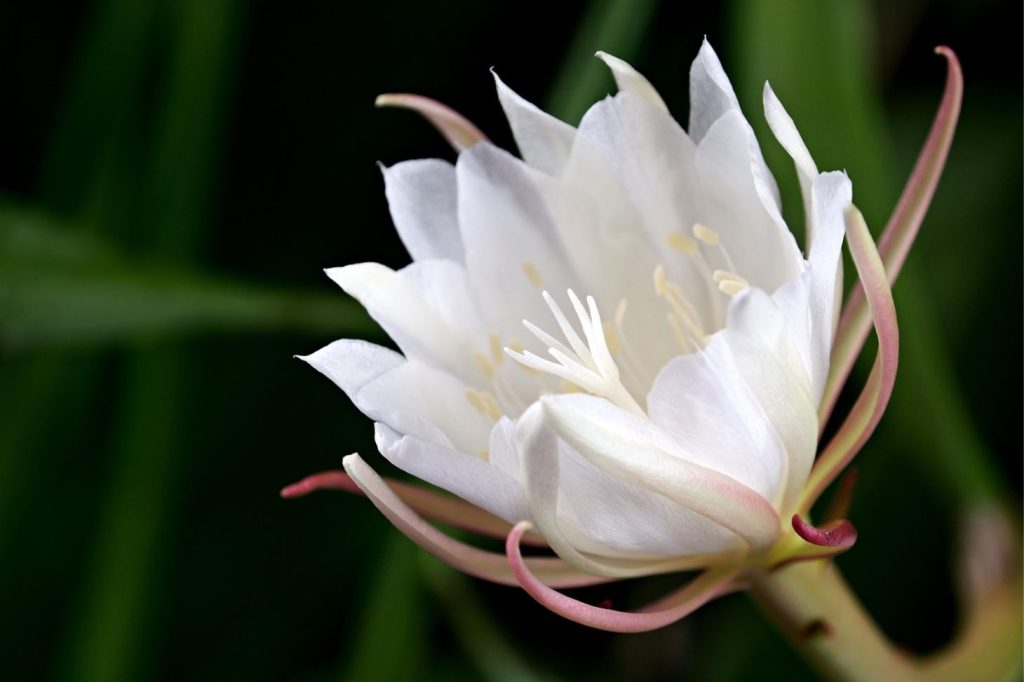
Orchid cacti (Epiphyllum) can be multiplied and shaped using simple techniques. Both propagation and pruning help maintain plant health while allowing you to expand your collection.
Propagating New Plants
Stem cuttings offer the easiest and most reliable method for propagating orchid cacti. Select healthy stems that are at least 4-6 inches long. Cut them with a clean, sharp knife and let the cuttings dry for 1-2 days until the cut ends callous over.
Once calloused, plant the cuttings in well-draining potting mix formulated for epiphytes or cacti. Insert about 1-2 inches of the cutting into the soil. Water sparingly, ensuring the top inch of soil dries out before watering again until roots develop.
You can also propagate orchid cacti from seeds, though this method takes longer. Collect seeds from mature fruits and sow them on the surface of moist soil. Keep them in bright, indirect light. Seedlings will develop slowly compared to cuttings.
Pruning for Shape and Health
Regular pruning keeps your orchid cactus healthy and attractive. Remove any damaged, diseased, or dead segments by cutting them at the base with clean pruning shears. This prevents potential diseases from spreading to healthy parts.
If your phyllocactus becomes overgrown or leggy, don’t hesitate to prune it back. Cut stems at branch points to encourage bushier growth. The best time for major pruning is after flowering has finished.
Older plants may need rejuvenation pruning. You can cut back up to one-third of the plant without harming it. This stimulates new growth and can improve flowering in mature specimens.
Save healthy pruned pieces to pot on as new plants, reducing waste while expanding your collection.
Maximizing Blooming Potential
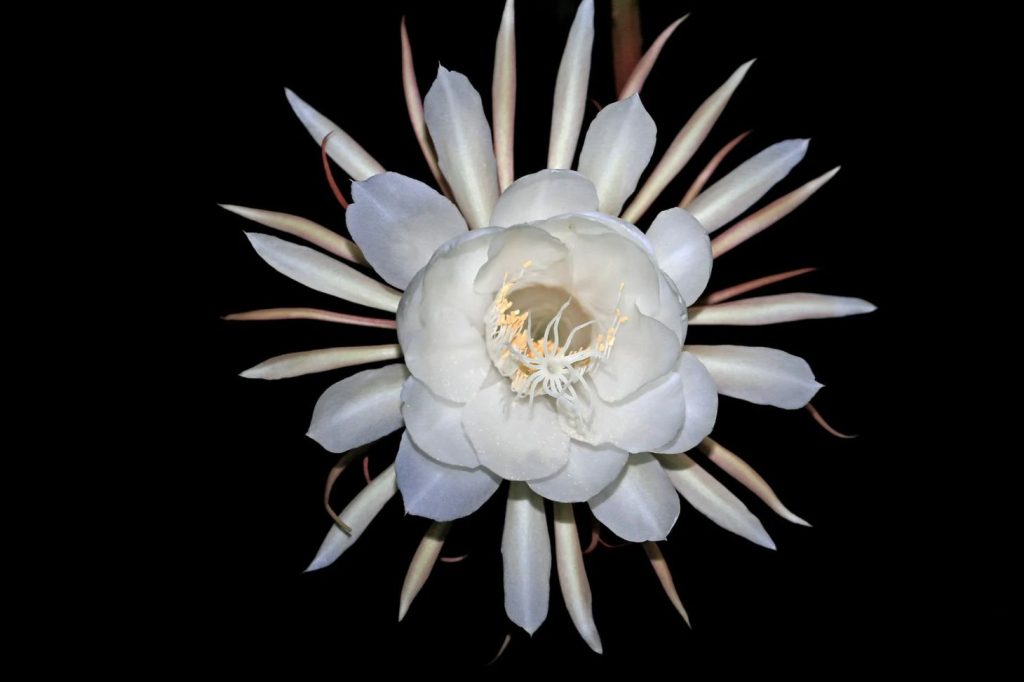
Getting your orchid cactus to produce its stunning flowers requires understanding its natural cycle and providing the right conditions. The key factors include temperature shifts, light exposure, and proper watering techniques during critical periods.
Understanding the Bloom Cycle
Orchid cacti typically bloom in spring, with some varieties flowering into early summer. These plants originate from Mexico and other tropical regions where they experience seasonal temperature changes that trigger blooming.
Most orchid cacti need a rest period during winter months with cooler temperatures around 40-50°F (4-10°C) at night for successful blooming. This mimics their natural habitat conditions.
The bloom cycle usually begins when days start getting longer. You’ll notice small buds form in the notches of the leaf-like stems. Once buds appear, avoid moving the plant as this can cause them to drop.
Some varieties, like the night blooming cereus, open their fragrant white flowers after sunset. These spectacular blooms often last just one night but create an unforgettable display.
Tips for Encouraging Flowers
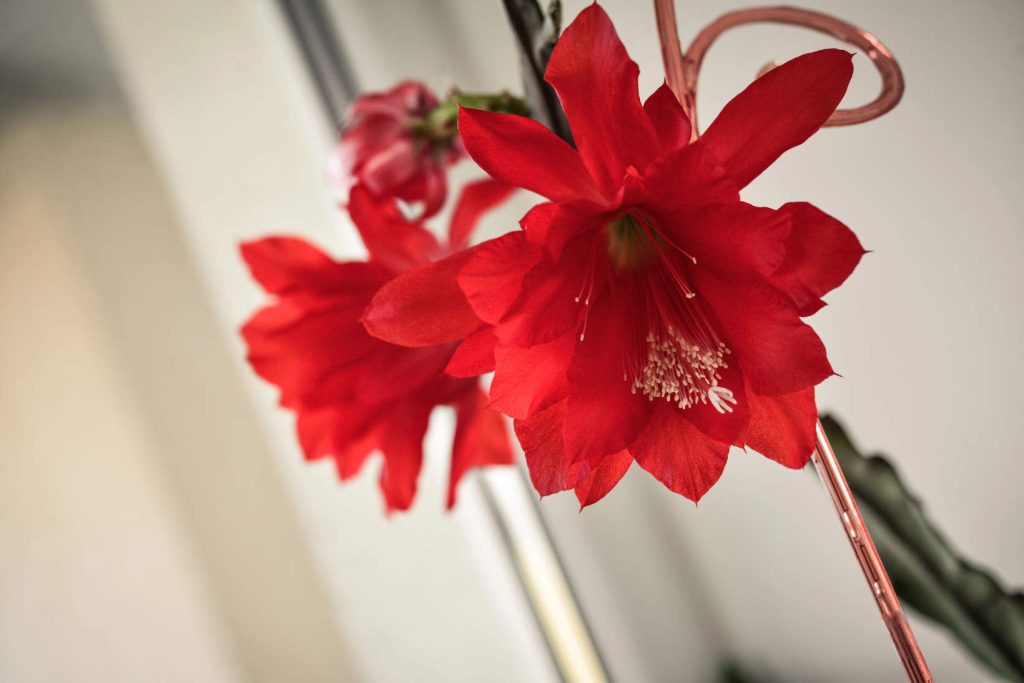
Temperature Management:
- Expose plants to cooler nighttime temperatures (40-50°F)
- Maintain warmer daytime temperatures (60-80°F)
- Avoid extreme temperature fluctuations
Light Requirements:
- Provide bright, indirect light during growing season
- Reduce light exposure slightly during rest period
- Protect from intense afternoon sun which can burn leaves
Proper watering is crucial for blooming success. Cut back watering in winter (only when soil is completely dry), then increase gradually as spring approaches.
Fertilize orchid cacti with a balanced, slow-release fertilizer during the growing season to encourage healthy growth and blooming. This supports flower development without promoting excessive leaf growth.
Slightly rootbound plants often bloom better than those recently repotted. Try to repot only every 2-3 years if they show signs of being root-bound.

